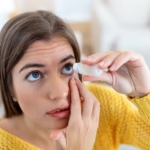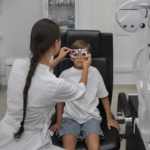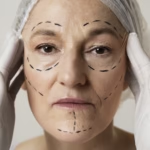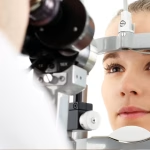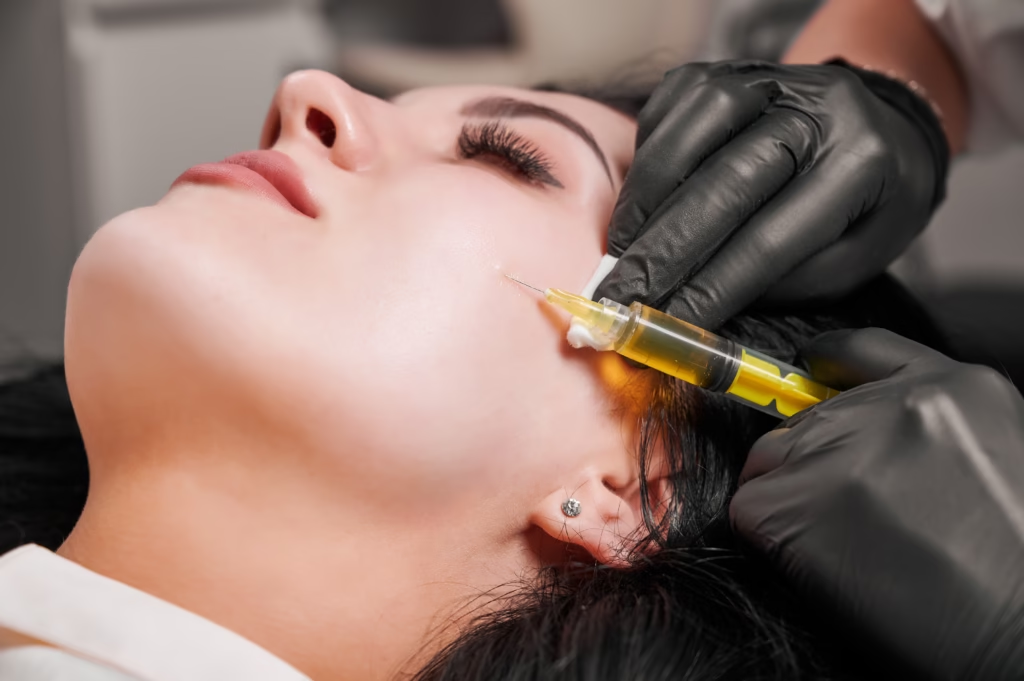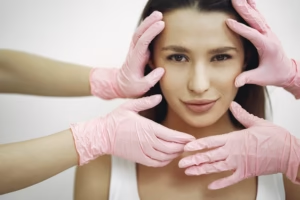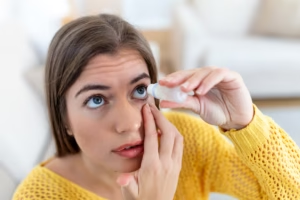Microneedling has rapidly become one of the most popular skin rejuvenation procedures worldwide. It is praised for its ability to improve skin texture, reduce scars and boost collagen production all with minimal downtime compared to traditional treatments.
But like every cosmetic procedure, microneedling is not without its risks. While most patients experience only mild and temporary reactions, understanding the microneedling side effects and how to manage them helps ensure safe, effective results.
At Leevision, we believe that informed patients make the best decisions. This guide will explain the side effects of microneedling, possible dangers of microneedling, recovery guidelines and expert safety tips to help you achieve smooth and glowing skin safely.
What Is Microneedling?
Microneedling, also known as collagen induction therapy, involves the use of a device equipped with fine needles that create tiny punctures in the top layer of the skin. These micro-injuries trigger the body’s natural healing process, stimulating collagen and elastin production.
It is commonly used to treat
- Acne scars and large pores
- Fine lines and wrinkles
- Stretch marks
- Uneven skin tone
- Mild sagging
Because of its versatility and minimal downtime, microneedling has gained popularity among dermatologists, aesthetic specialists and patients seeking non-surgical skin rejuvenation.
Why Understanding Microneedling Side Effects Is Important
While microneedling is generally considered safe, side effects of microneedling can occur, especially when performed incorrectly or without proper aftercare.
Knowing what to expect before and after treatment helps you prepare for temporary reactions and avoid long-term complications.
Common Microneedling Side Effects
Most patients experience mild, short-term reactions that resolve within a few days. Here are the most common microneedling side effects:
- Redness and Swelling
After microneedling, it is normal for your skin to appear flushed or slightly swollen similar to a mild sunburn. This usually fades within 24 to 48 hours.
- Skin Sensitivity
The treated area may feel tight, warm or tender for a day or two. Using gentle skincare and avoiding sun exposure helps minimize irritation.
- Peeling or Dryness
As the skin regenerates, mild flaking or peeling can occur. This is part of the natural healing process and typically lasts only a few days.
- Temporary Breakouts
Some individuals may notice small pimples or bumps after microneedling. This happens when pores temporarily get clogged during healing but usually clears quickly with proper cleansing.
- Mild Bruising
Bruising is uncommon but may occur, particularly for people with sensitive skin or those taking blood-thinning medications.
These short-term effects indicate your skin is responding to treatment. However, severe or persistent symptoms may suggest deeper issues.
Potential Risks and Dangers of Microneedling
Although rare, certain complications can arise, especially when the procedure is performed by untrained hands or with unhygienic equipment. Below are the key dangers of microneedling to be aware of
- Infection
Microneedling involves puncturing the skin, which can introduce bacteria if the tools or environment are not sterile. Signs include increased redness, swelling, pus or pain. Always ensure your treatment is performed in a clinical setting using sterilized devices.
- Hyperpigmentation
Improper technique or excessive needle depth can trigger inflammation, leading to dark spots—especially in people with darker skin tones. Following post-care instructions (like avoiding sun exposure) can reduce this risk.
- Scarring
Though rare, aggressive microneedling or use on active acne or open wounds may cause scarring. That is why professional evaluation before treatment is crucial.
- Allergic Reaction
Some patients may react to serums, numbing creams or topical products used during the session. Always inform your dermatologist about any allergies beforehand.
- Persistent Redness or Itching
If redness lasts longer than 3 to 5 days, it may indicate irritation or infection requiring professional attention.
Is Microneedling Safe?
When performed by licensed dermatologists or trained medical professionals, microneedling is safe for most skin types. The devices used in clinics are medical-grade and precisely calibrated to penetrate the correct skin depth.
Professional microneedling ensures
- Sterile, controlled treatment
- Customized needle depth for each skin concern
- Reduced risk of infection or scarring
However, DIY or non-professional treatments increase the risk of microneedling gone wrong scenarios.
Is Microneedling at Home Safe?
Home microneedling rollers are widely available but they are not recommended for deep or clinical-level treatments.
Here is why microneedling at home may not be safe:
- The rollers are difficult to sterilize properly, increasing infection risk.
- Most users apply too much pressure, damaging the skin barrier.
- Unsupervised use may lead to scarring or pigmentation issues.
If you have ever seen gone wrong microneedling before and after 1 treatment photos online, they often result from at-home or spa-based procedures done without professional guidance.
At Leevision, we always advise that microneedling be done under medical supervision for optimal results and safety.
Microneedling Gone Wrong – What Can Happen
Microneedling gone wrong typically involves excessive needle depth, poor hygiene or post-care negligence. Some examples include
- Deep cuts or bleeding due to incorrect technique
- Infections from unsterilized needles
- Uneven skin texture or scarring from over-treatment
- Hyperpigmentation caused by sun exposure immediately after treatment
If you experience severe irritation, prolonged redness or unusual pain after a session, consult your dermatologist immediately.
How to Prevent and Minimize Side Effects
Minimizing side effects of microneedling is possible with proper preparation and aftercare. Here is how to protect your skin
Before Treatment
- Avoid retinol, exfoliants and active ingredients for 3 to 5 days before your appointment.
- Stay hydrated and keep your skin moisturized.
- Avoid sun exposure or tanning.
- Inform your dermatologist of any medications or skin conditions.
After Treatment
- Do not touch your face or apply makeup for at least 24 hours.
- Use a gentle, fragrance-free cleanser and moisturizer.
- Apply a broad-spectrum sunscreen daily.
- Avoid intense exercise, saunas and direct sunlight for 48 hours.
- Do not pick or peel flaking skin.
By following these guidelines, most microneedling side effects fade quickly, leaving smoother, brighter skin behind.
Recovery Timeline After Microneedling
- Day 1–2 – Redness and mild swelling similar to sunburn.
- Day 3–5 – Slight flaking or dryness as new skin forms.
- Day 5–7 – Noticeable improvement in texture and tone.
- After 2 Weeks – Collagen remodeling begins skin looks firmer and more radiant.
Consistent treatments (every 4 to 6 weeks) under professional supervision yield the best long-term results with minimal risks.
When to See a Doctor
Seek medical attention if you experience any of the following:
- Severe or persistent redness after 5 days
- Signs of infection (pus, fever or spreading swelling)
- Sudden dark patches or discoloration
- Unusual pain or burning sensations
These symptoms could indicate complications that require prompt medical care.
Expert Advice from Leevision
At Leevision, our dermatology experts carefully assess each patient’s skin type and medical history before recommending microneedling. We use FDA-approved devices and sterile techniques to ensure the highest level of safety.
Our focus is on natural, gradual improvements never over-aggressive treatments that compromise your skin barrier.
If you have experienced microneedling gone wrong elsewhere, our specialists can help evaluate and manage your skin recovery effectively.
Frequently Asked Questions:
- How long do microneedling side effects last?
Most microneedling side effects resolve within 2 to 3 days, though slight redness or dryness may persist for up to a week. - Is microneedling safe for sensitive skin?
Yes, when done professionally. Your dermatologist will adjust the needle depth to suit your skin type. - Can microneedling cause permanent damage?
Permanent damage is extremely rare and usually occurs only from improper or at-home procedures. - Can I wear makeup after microneedling?
Wait at least 24 to 48 hours before applying makeup to allow the skin to heal fully. - What should I avoid after microneedling?
Avoid sun exposure, harsh products, swimming pools and physical exfoliation for 3 to 5 days. - Is microneedling painful?
A numbing cream is applied before the procedure, so most patients experience only mild discomfort. - Can I do microneedling at home safely?
Home rollers can cause infection or scarring if not used properly. Professional treatments are much safer and more effective. - Why does microneedling sometimes cause breakouts?
Temporary breakouts can occur if bacteria enter the skin or if clogged pores are already present. Keeping your skin clean prevents this. - Can microneedling make pigmentation worse?
If done too aggressively or without sun protection, yes. However, professional microneedling usually improves pigmentation. - How often should I get microneedling treatments?
Every 4 to 6 weeks is recommended for optimal collagen stimulation and visible results.
Conclusion:
Microneedling is one of the most effective and minimally invasive skin rejuvenation treatments available today. However, understanding microneedling side effects and the dangers of microneedling, especially when done outside of a medical setting, is essential for your safety and satisfaction.
At Leevision, our certified dermatologists perform every procedure with precision, hygiene and patient safety in mind. Whether you are treating acne scars, wrinkles or dullness, our experts ensure your skin heals beautifully without unwanted complications.
Your skin deserves professional care? trust Leevision for safe, effective microneedling treatments.


